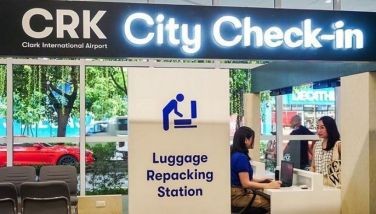Bishops can review PCOS mock election last July

The placement of the automated election machines in the agenda of the Catholic bishops meeting in January is unusual. It shows that they too doubt the reliability of the precinct count optical scanners (PCOS). Unreliable counting machines equals unacceptable election results. No less than the prelates’ president, Cebu archbishop Jose Palma, is seeking a thorough test before the May 2013 congressional-local balloting.
Will the Comelec agree to a mock election, with the results open to scrutiny by info-tech professionals and mathematicians? Will Smartmatic, the Comelec’s Venezuelan supplier of 82,000 PCOS units worth P9 billion, come clean?
As previously suggested by experts, the mock poll can be conducted in one barangay, with at least 1,000 voters simulating the 2013 event. Meaning, they would cast ballots for senators, congressman, party-list, governor, vice governor, provincial board members, municipal mayor, vice mayor, and councilors. The process should be from startup of the PCOS to ballot recognition, vote tallying to transmission of results to the canvassing center.
The last time the Comelec-Smartmatic conducted such a voting, it was more like a product demo than an election simulation. The event was held at the House of Representatives last July 24-25. Four electoral races were done: for president, senator, party list, and congressman. And the results of the 1,000 ballots were far from satisfactory.
Smartmatic reported an accuracy rate of 99.987 percent in all four races. Though only slightly, this was below the 99.995-percent accuracy required by the Automated Election Law of 2008. And Smartmatic came up with its self-serving figure by fudging, experts from the AES (Automated Election System) Watch decried then.
What the firm did was to add up all the PCOS count and the manual review, thus cancelling out the many errors. Had it not done so, the truth would have come out: a mere 93.757 percent accuracy. In real terms, this means the disenfranchisement of millions of voters.
The correct formula should have been to add up the absolute value of errors per candidate to come out with valid accuracy ratios. This was the critique made by Drs. Pablo Manalastas and Felix Muga II. The two are fellows of the Center for People Empowerment in Governance (CenPEG), consisting of academics from among others the University of the Philippines and Ateneo University, and aligned with AES Watch.
Manalastas, a mathematician, was former chairman of the Ateneo computer science department. Muga, an awardee for outstanding young scientist, used to head the same university’s mathematics department. Smartmatic’s claimant of the high 99.987-percent accuracy was its country manager Cesar Flores. He started with the Venezuelan firm as a salesman, not an IT expert or software developer.
Manalastas and Muga’s conclusion of a mere 93.757-percent PCOS accuracy has serious implications. It is a variance of 6.2375 percent from the law’s minimum of 99.995 percent, based on international standards. Every 1-percent error translates to about 380,000 votes. So the 6.2375-percent error means 2.37 million votes miscounted.
There were 52 errors in the count for president, or an accuracy rate of 93.7575 percent. For senators there were 6,309 errors, for an accuracy of 97.68758 percent. For party list there were 768 errors, or 97.4026 percent. And for congressman there were 498 errors, or 96.85039 percent.
After the PCOS count, the votes for 197 candidates in all positions manually were audited. The manual count for 114 candidates did not match the PCOS. The manual and PCOS votes of only 83 of the 197 candidates matched. [Check out http://www.namfrel.com.ph/v2/news/bulletin/CopyRevSmartmaticRep(2)-editedbasedoncomm090912.pdf]
The law’s 99.995-percent requirement can tolerate an error of only one per 20,000 marks. Last July’s testing showed 557 errors for every 20,000 marks.
In computing the party-list results, Muga found significant errors that virtually made all 770 candidates statistically tied in all rankings. In a real election, this would induce all candidates to claim victory.
There was also an alarmingly high rejection rate of ballots: 4 percent. AES Watch statisticians said this would mean, in a real election, of disenfranchisement of about 10 million ballots. That would be nearly a fifth of the 55 million or so voters.
Nelson J. Celis, an IT professional and the AES Watch spokesman, has been warning the Comelec against using Smartmatic’s PCOS in 2013 the way it did in the 2010 presidential-congressional-local polls. From a Delaware court case last September, it became clear that Smartmatic does not own the software that runs the system. The real owner is Dominion Voting Systems of Canada, which has rescinded Smartmatic’s license.
Using Smartmatic’s PCOS would make the Philippine government one of the world’s biggest software pirates, AES Watch leaders have warned.
Celis, former president of the Philippine Computer Society, was awarded the most outstanding electronics engineer of 2012 by the Institute of Electronics and Communication Engineers of the Philippines.
In contrast, the Comelec is composed of six lawyers and one former politician, notes UP professor Bobby Tuazon of the CenPEG. Not one in the Comelec top brass understands the automated election process from start to finish, the CenPEG says. That’s why they let the voluble Cesar Flores of Smartmatic do all the talking for them.
* * *
Catch Sapol radio show, Saturdays, 8-10 a.m., DWIZ (882-AM).
E-mail: [email protected]
- Latest
- Trending






















